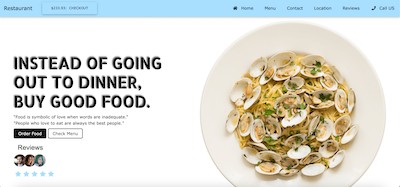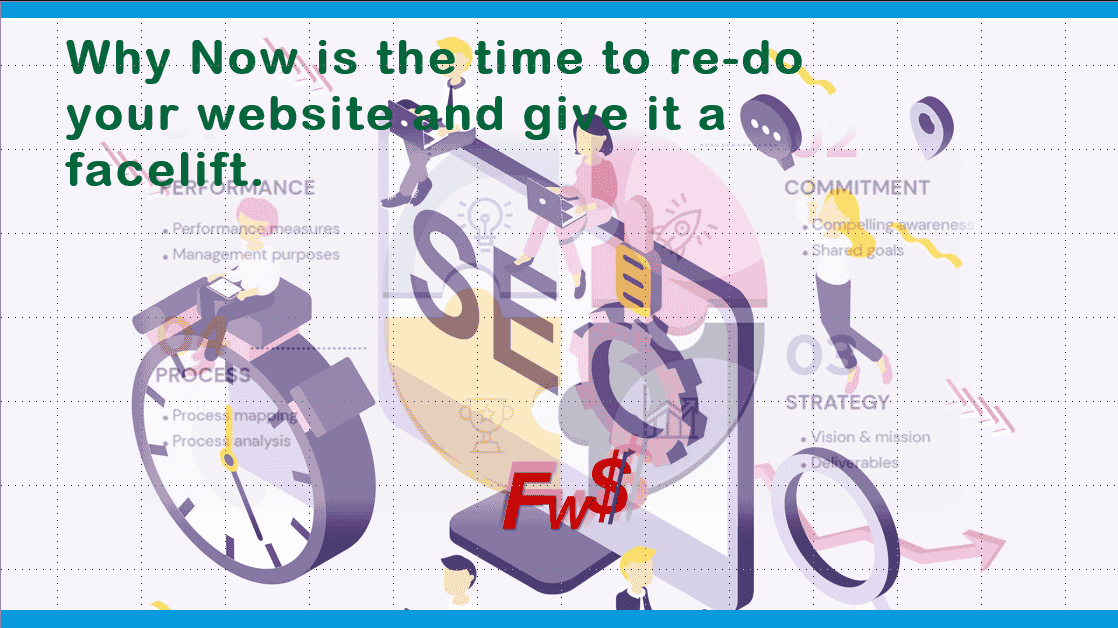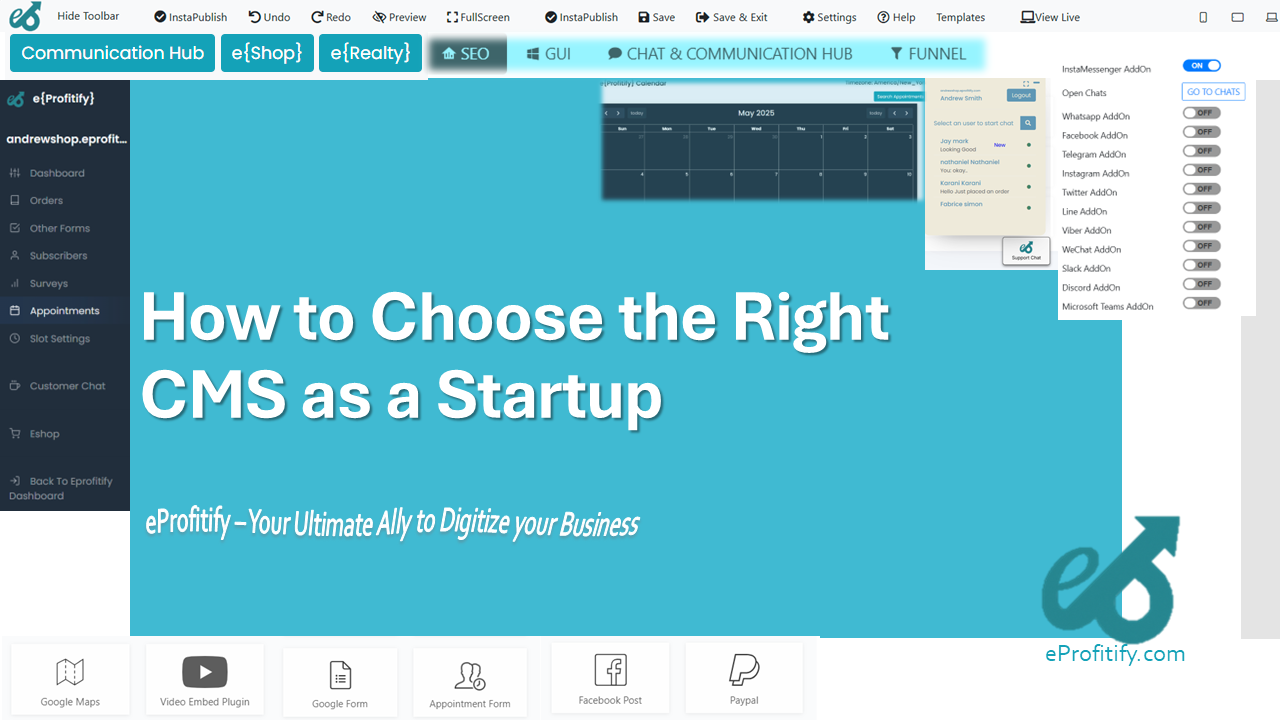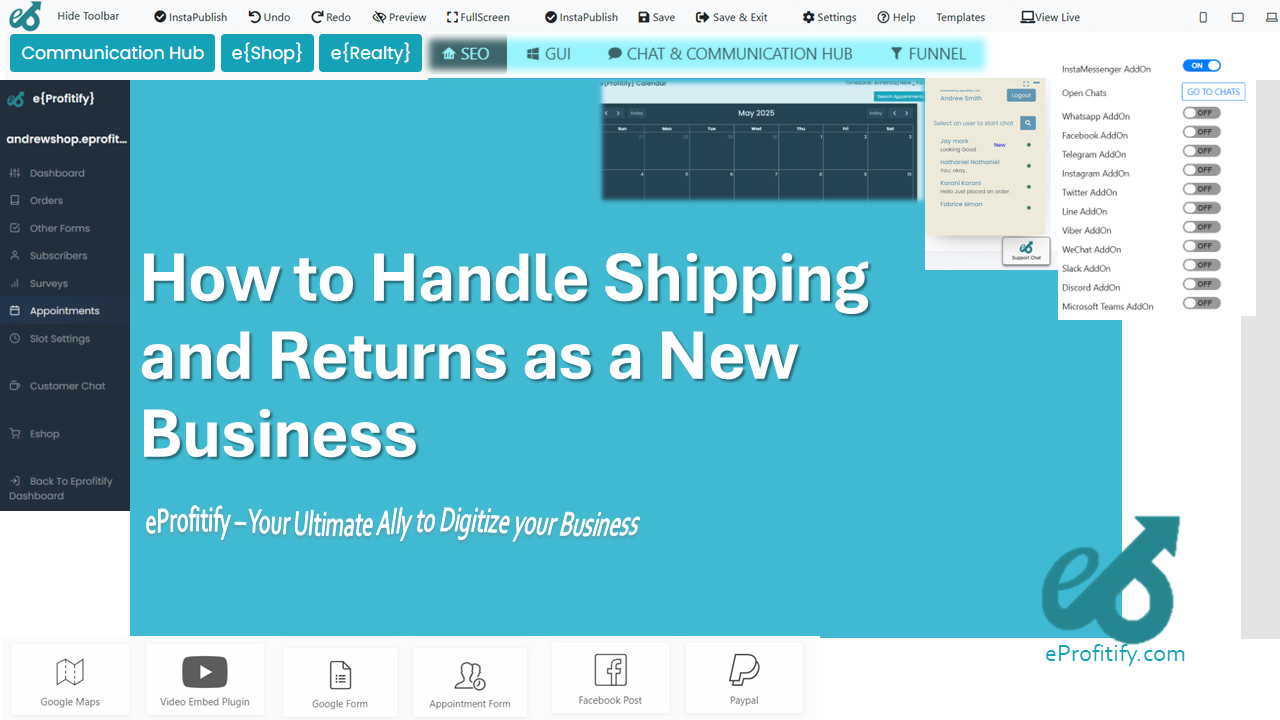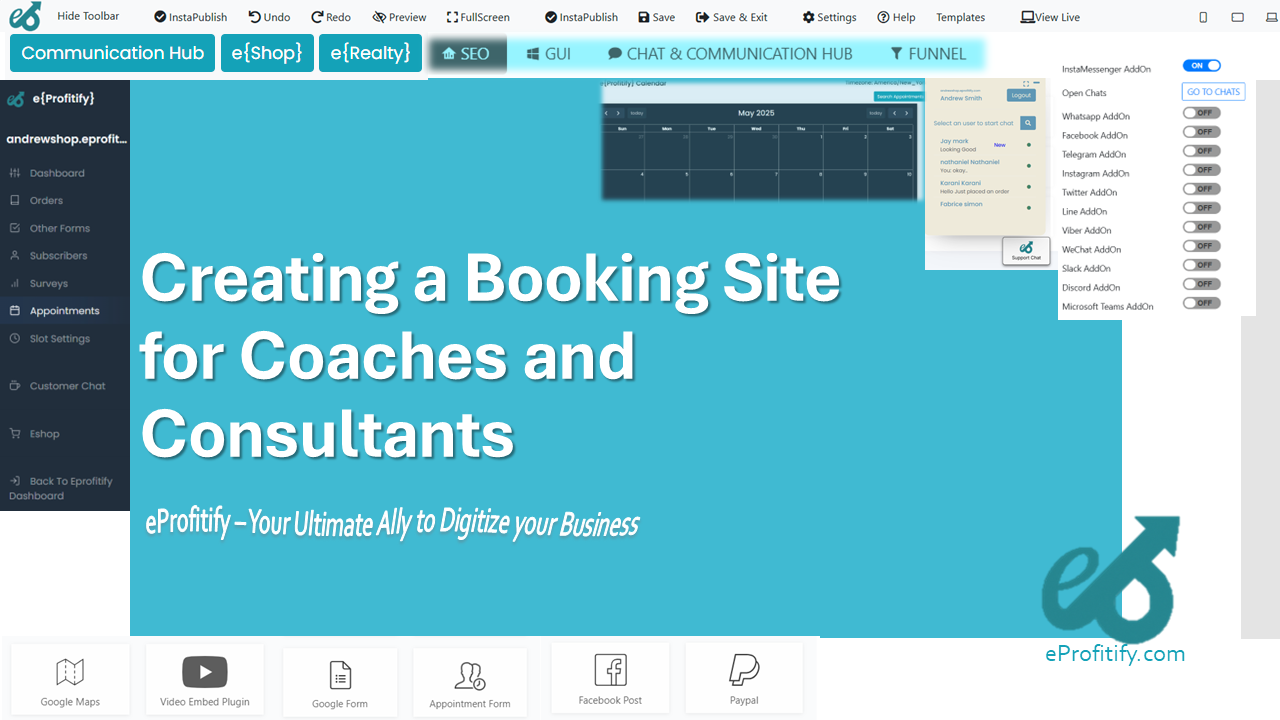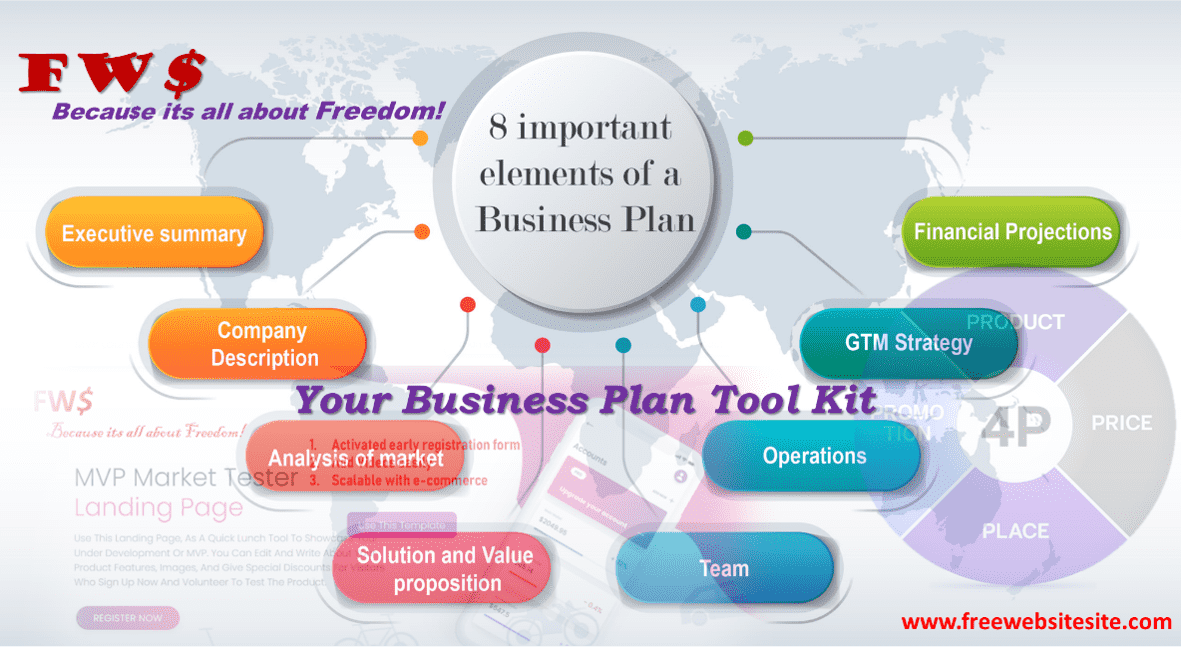How to Launch an Ecommerce Website Without Inventory
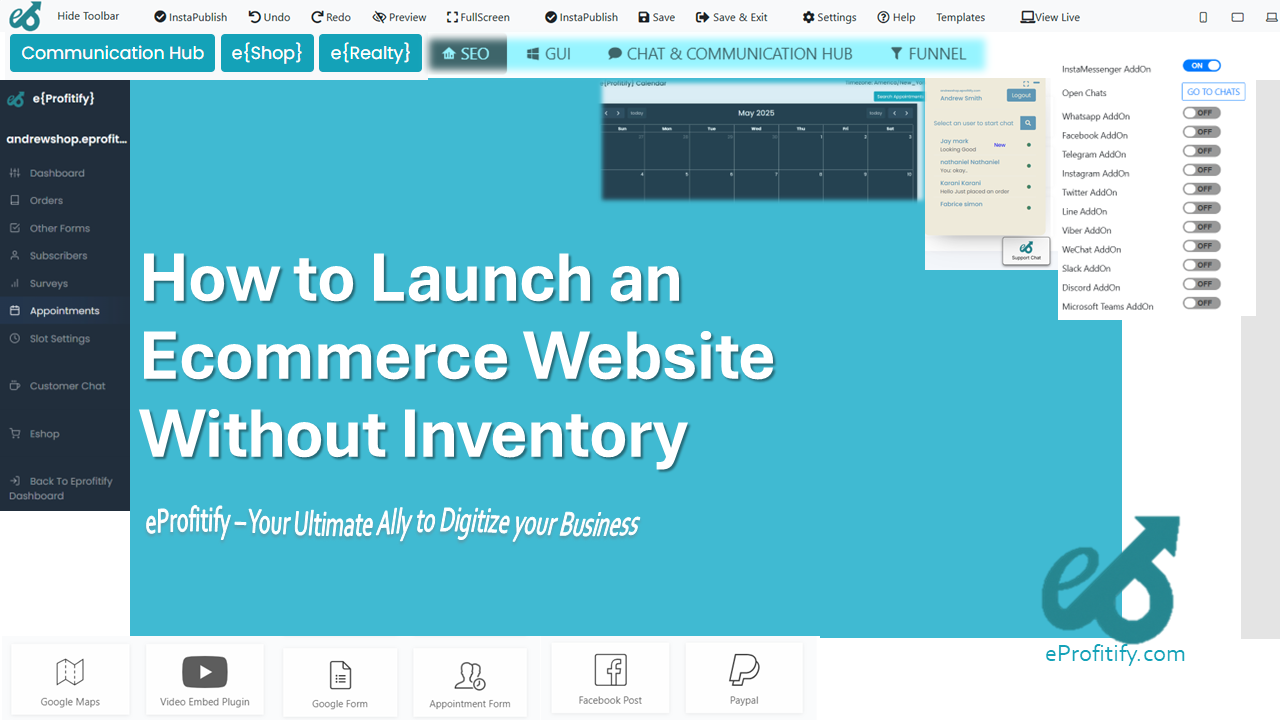
How to Launch an Ecommerce Website Without Inventory: A Step-by-Step Guide
(Including Key Statistics and How eProfitify Streamlines the Process)
The global ecommerce market is booming, with sales projected to reach $6.3 trillion by 2024 (Statista). Yet, traditional inventory management remains a barrier for many entrepreneurs. Fortunately, modern business models like dropshipping, print on demand, affiliate marketing, and digital product sales allow you to launch a profitable ecommerce website without holding physical stock. Combined with tools like eProfitify—a leading website publishing and management platform—entrepreneurs can streamline operations, reduce costs, and scale efficiently.
This guide breaks down how to start an inventory-free ecommerce business, supported by key statistics and insights into how eProfitify’s integrated features (instant messaging, CRM, appointment management, and more) empower success.
Step 1: Choose Your Business Model
The first step is selecting an inventory-free model aligned with your goals:
-
Dropshipping
- How it works: Partner with suppliers who ship products directly to customers. You market the products and handle sales.
- Stats: The dropshipping market is growing at a 28.8% CAGR (2020–2025), driven by low startup costs (Grand View Research).
- Pro tip: Use platforms like AliExpress, SaleHoo, or Spocket to find vetted suppliers.
-
Print on Demand (POD)
- How it works: Sell custom-designed products (e.g., T-shirts, mugs) through POD providers like Printful or Teespring. They print and ship orders on demand.
- Stats: The global POD market will hit $39.9 billion by 2030, fueled by personalization trends (Allied Market Research).
-
Affiliate Marketing
- How it works: Promote third-party products and earn commissions. Ideal for bloggers and influencers.
- Stats: The affiliate marketing industry is valued at $17 billion (Invesp), with niches like tech and wellness performing strongly.
-
Digital Products
- How it works: Sell eBooks, courses, software, or memberships.
- Stats: Digital products boast 70–90% profit margins due to near-zero production costs (Forbes).
How eProfitify Helps:
eProfitify supports all these models with seamless integrations. For example, its ecommerce tools connect with dropshipping suppliers, while its built-in CRM tracks affiliate partnerships and customer interactions.
Step 2: Validate Your Niche
Focus on a profitable, low-competition niche. Use tools like Google Trends, Ahrefs, or eProfitify’s analytics dashboard to:
- Analyze search volume and competition.
- Assess customer pain points via social media or forums.
- Test demand with pre-orders or landing pages.
Stat: 42% of startups fail due to poor market research (CB Insights). Don’t skip this step!
Step 3: Partner with Reliable Suppliers
For dropshipping and POD, vet suppliers based on:
- Product quality samples.
- Shipping times (aim for < 2 weeks).
- Return policies.
Pro tip: Use eProfitify’s instant messaging feature to communicate directly with suppliers, negotiate terms, and resolve issues quickly.
Step 4: Build Your Ecommerce Website
Your website is your storefront. Here’s how to set it up without coding:
-
Choose a Domain Name
- Use a short, brandable name (e.g., Shopify’s Domain Name Generator).
-
Select a Hosting Platform
- eProfitify’s Website Builder provides hosting, SSL security, and mobile-responsive templates tailored for ecommerce.
-
Optimize User Experience (UX)
- Ensure fast loading times (<3 seconds), intuitive navigation, and mobile optimization.
- Stat: 70% of consumers abandon carts due to poor UX (Baymard Institute).
-
Integrate Key Features
- Payment Gateways: Connect PayPal, Stripe, or Klarna.
- Analytics: Track traffic and conversions.
- eProfitify’s Unified Dashboard: Manage orders, inventory (virtual), and marketing campaigns in one place.
Step 5: Implement Marketing Strategies
Drive traffic with:
- SEO: Target long-tail keywords (e.g., “organic dog treats subscription box”).
- Social Media: Use Instagram Shopping or TikTok ads.
- Email Marketing: Nurture leads with automated campaigns via eProfitify’s CRM.
Stat: Email marketing delivers an $42 ROI for every $1 spent (Litmus).
Step 6: Prioritize Customer Support
Use eProfitify’s tools to enhance satisfaction:
- Instant Messaging: Resolve queries in real time.
- Appointment Management: Ideal for service-based add-ons (e.g., consultations).
- CRM: Track customer preferences and purchase history to personalize interactions.
Step 7: Navigate Legal Requirements
- Register your business (LLC recommended for liability protection).
- Secure licenses (if required).
- Draft clear return and privacy policies.
- Use eProfitify’s template library for legal docs.
Step 8: Scale Your Business
- Automate workflows with eProfitify’s AI-driven tools.
- Upsell/cross-sell using CRM insights.
- Expand to new markets or add complementary products.
Stat: Businesses using automation see a 10%+ reduction in operational costs (McKinsey).
Why eProfitify Stands Out
eProfitify isn’t just a website builder—it’s a comprehensive ecosystem for inventory-free businesses:
- All-in-One Platform: Integrates ecommerce, CRM, analytics, and marketing.
- Instant Messaging & Live Chat: Boost conversions by 20% with real-time support.
- Appointment Management: Streamline bookings for hybrid product/service models.
- Supplier Collaboration: Centralize communication with global partners.
- Affordable Pricing: Plans start at $29/month, ideal for bootstrapped startups.
Conclusion
Launching an inventory-free ecommerce website is a low-risk, high-reward venture in today’s digital economy. By leveraging models like dropshipping and tools like eProfitify, entrepreneurs can focus on growth without logistical headaches. With a projected 1.56 billion global digital buyers in 2024 (Statista), there’s never been a better time to start.
Ready to launch? eProfitify’s 14-day free trial offers everything you need to go from idea to revenue—no inventory required.

